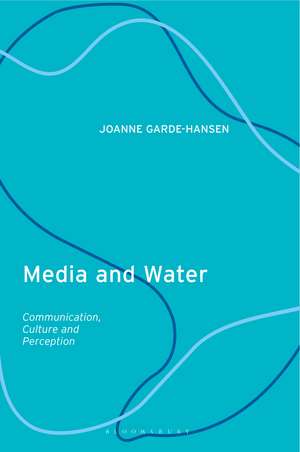Media and Water: Communication, Culture and Perception
Autor Professor Joanne Garde-Hansenen Limba Engleză Paperback – 27 iul 2022
| Toate formatele și edițiile | Preț | Express |
|---|---|---|
| Paperback (1) | 197.59 lei 6-8 săpt. | |
| Bloomsbury Publishing – 27 iul 2022 | 197.59 lei 6-8 săpt. | |
| Hardback (1) | 471.56 lei 3-5 săpt. | +27.34 lei 7-13 zile |
| Bloomsbury Publishing – 13 ian 2021 | 471.56 lei 3-5 săpt. | +27.34 lei 7-13 zile |
Preț: 197.59 lei
Preț vechi: 257.78 lei
-23% Nou
Puncte Express: 296
Preț estimativ în valută:
37.81€ • 39.69$ • 31.38£
37.81€ • 39.69$ • 31.38£
Carte tipărită la comandă
Livrare economică 10-24 aprilie
Preluare comenzi: 021 569.72.76
Specificații
ISBN-13: 9780755636921
ISBN-10: 0755636929
Pagini: 232
Dimensiuni: 156 x 234 mm
Greutate: 0.33 kg
Editura: Bloomsbury Publishing
Colecția Bloomsbury Academic
Locul publicării:London, United Kingdom
ISBN-10: 0755636929
Pagini: 232
Dimensiuni: 156 x 234 mm
Greutate: 0.33 kg
Editura: Bloomsbury Publishing
Colecția Bloomsbury Academic
Locul publicării:London, United Kingdom
Caracteristici
One of first books on the representation of water issues in the media - an increasingly important subject due to climate change
Notă biografică
Joanne Garde-Hanson is Professor of Culture, Media and Communication in the Centre for Cultural Policy Studies, University of Warwick. She is a media specialist with a particular interest in water and its depiction in the media. She has been co-investigator on the ESRC funded Sustainable Flood Memories and Digital Stories of Flooding projects and is co-investigator on the National Environmental Research Council project Developing a Drought Narrative Resource.
Cuprins
List of illustrations Acknowledgements Introduction: Why media and water? Part 1 Communication1 Media templates for representing water 2 Deluge and Tempest in the BBC archives 3 Socially mediating water for digital hydro-citizenship Part 2 Culture4 Story-ing water: Liquidity, bubbles, storage 5 Remembering and re-mediating women in drought 6 Forgetting water: Developing a flood memory app Part 3 Perception7 The cultural value of water and water's impact on cultural values 8 Riparian media for marginal communities 9 Waterproofing media and memory for flood risk Conclusion References Index
Recenzii
This book offers an important and original contribution to burgeoning scholarship on the cultures, practices and values associated with water. It draws out the key role of media in archiving, narrating, remembering and forgetting water's entanglements with human lives - from mediations of women in drought, to intergenerational exchange and learning around historical floods. The book provides a rich, vivid account that makes a case for an ecologically-aware analysis of water/media for scholars and students of media studies and cognate disciplines.
Narrowing the focus of study is required by almost every field of science to respond to the distinctiveness of its research questions. But that is a strategy that often makes it difficult to perceive the whole picture and the deepest relationships between its elements. This book overcomes that limitation by drawing comprehensive connections, that come to light thanks to the author's trained eye. And, when revealing them, the book becomes fundamental by unveiling levels of meaning and knowledge that would otherwise remain hidden.
Narrowing the focus of study is required by almost every field of science to respond to the distinctiveness of its research questions. But that is a strategy that often makes it difficult to perceive the whole picture and the deepest relationships between its elements. This book overcomes that limitation by drawing comprehensive connections, that come to light thanks to the author's trained eye. And, when revealing them, the book becomes fundamental by unveiling levels of meaning and knowledge that would otherwise remain hidden.
